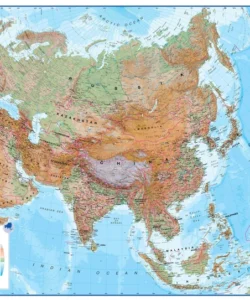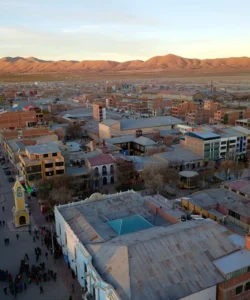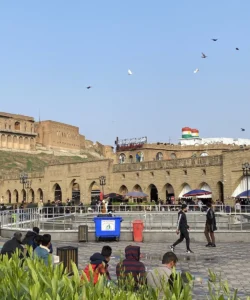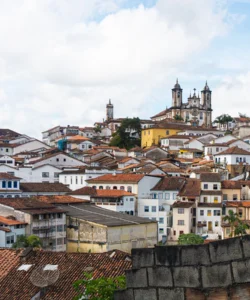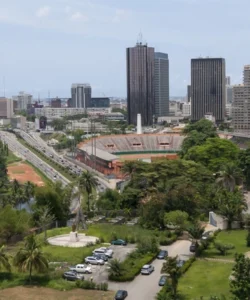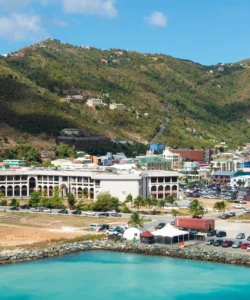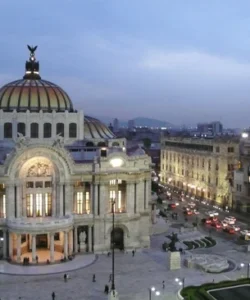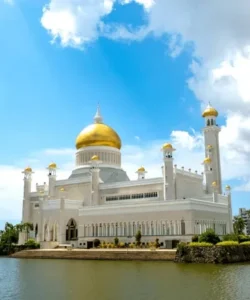Bangkok’s Chinatown, locally known as Yaowarat (เยาวราช), is one of the oldest, largest, and most vibrant Chinatowns in the world. Established in 1782 by Chinese immigrants who were asked to relocate from their original settlement (where the Grand Palace now stands), it quickly grew into Bangkok’s primary commercial hub. Today, it’s a bustling, sensory-rich district renowned for its dazzling gold shops, labyrinthine markets, authentic street food, and numerous Chinese temples and shrines, offering a truly immersive cultural experience.
Listen to an introduction about Chinatown Bangkok
![]()
Name: Chinatown, Bangkok (locally, Yaowarat Road, or Sampheng area)
Address: The heart of Chinatown is Yaowarat Road (ถนนเยาวราช) in the Samphanthawong District, Bangkok, Thailand. The area extends into numerous intersecting sois (alleys) and parallel roads.
How to get there:
Bangkok’s Chinatown is very accessible via various modes of transport:
- By MRT (Subway): The most convenient modern way. Take the MRT Blue Line to Wat Mangkon Station (BL29). This station has exits directly into the heart of Chinatown, making it incredibly easy to access.
- By Boat (Recommended for Scenic Arrival): Take the Chao Phraya Express Boat (Orange Flag) to Ratchawong Pier (N5). From the pier, it’s a brisk 10-15 minute walk up Ratchawong Road to Yaowarat Road. This offers a great river approach and sense of arrival.
- By Taxi/Tuk-Tuk: Readily available throughout Bangkok. Taxis should use a meter; for tuk-tuks, negotiate the price beforehand.
- By Bus: Numerous city bus routes serve the Yaowarat area.
Landscape and Architecture:
Chinatown’s landscape is a fascinating blend of traditional Chinese aesthetics, colonial influences, and the chaotic energy of a thriving commercial district:
- Yaowarat Road: The main artery, a broad thoroughfare that transforms into a massive street food haven at night. It’s lined with multi-story shophouses, often adorned with traditional Chinese signs and neon lights, creating a vibrant, often overwhelming, visual spectacle.
- Gold Shops: One of the most striking architectural features are the numerous, opulent gold shops lining Yaowarat Road. Their gleaming facades and large, stylized Chinese characters are hard to miss, reflecting the district’s historical wealth and continued prosperity.
- Narrow Sois (Alleys): Branching off Yaowarat Road are countless narrow, labyrinthine alleys like Sampeng Lane (Soi Wanit 1), filled with wholesale markets, small shops, and hidden eateries. These alleys often feature older, sometimes dilapidated, shophouses, offering a glimpse into the district’s past.
- Chinese Temples and Shrines: Dotted throughout the district are numerous ornate Chinese temples and shrines, often hidden behind bustling market stalls or nestled on quiet side streets. These temples are characterized by their multi-tiered roofs, intricate dragon and phoenix sculptures, vibrant red and gold decorations, and the pervasive scent of incense.
- Wat Mangkon Kamalawat (Wat Leng Noei Yi): The largest and most important Chinese Buddhist temple in Bangkok, known for its intricate details and a lively atmosphere during festivals.
- Wat Traimit (Temple of the Golden Buddha): While technically just outside the main Chinatown area, it’s a significant landmark due to its colossal 3.5-meter-tall, 5.5-ton solid gold Buddha statue, discovered beneath a plaster casing in 1955. The temple also houses a museum about Chinatown’s history.
- Leng Buai Ia Shrine: One of the oldest Chinese shrines in Bangkok, dating back to the Ayutthaya period.
- Chinatown Gate (Odeon Circle Arch): A prominent and ornate Chinese archway (pai fang) at the beginning of Yaowarat Road (near the Wat Traimit intersection), marking the official entrance to Chinatown.
- Sino-Portuguese Shophouses: In some older areas, particularly along roads like Charoen Krung Road and Song Wat Road, you can find charming Sino-Portuguese style shophouses with distinctive facades that blend Chinese and European architectural elements, remnants of early international trade.
- Street Food Stalls: While temporary, the sheer volume and vibrant display of street food stalls are a dominant “architectural” element, transforming the sidewalks into open-air kitchens and dining rooms every evening.
What makes it famous:
Bangkok’s Chinatown is famous for:
- World-Class Street Food: Widely recognized as one of the world’s best street food destinations, offering an overwhelming variety of traditional Chinese and Thai-Chinese dishes, fresh seafood, dim sum, noodles, and unique desserts. The evening atmosphere for food is particularly legendary.
- Gold Trading Hub: It is a major center for gold trading, with numerous gleaming gold shops that symbolize wealth and good fortune.
- Authentic Chinese Immigrant Culture: Unlike some Chinatowns that have become highly sanitized for tourism, Bangkok’s Chinatown retains a raw, authentic, and vibrant character, reflecting centuries of Chinese immigrant life and cultural adaptation in Thailand.
- Bustling Markets (e.g., Sampeng Lane): The maze-like alleys are packed with wholesale and retail shops selling everything from textiles and stationery to household goods and traditional Chinese medicines.
- Wat Traimit (Golden Buddha): Home to the world’s largest solid gold Buddha statue, a significant spiritual and historical draw.
- Traditional Chinese Temples: A high concentration of active and beautifully ornate Chinese temples and shrines provide a spiritual backbone to the commercial activity.
- Vibrant Nightlife: It buzzes with activity from dusk till late, with street food, shopping, and a unique energy that is distinct from other parts of Bangkok.
Differences from some other wonders:
Bangkok’s Chinatown offers a distinct experience compared to other major Chinatowns globally and other urban areas in Bangkok:
- Dominance of Teochew Culture: Unlike many Chinatowns in the West dominated by Cantonese or Fujianese, Bangkok’s Chinatown was largely founded by and retains a strong influence from the Teochew (Chaozhou) Chinese dialect group. This gives it a specific culinary (e.g., unique Teochew dishes) and cultural flavor.
- Integration with Thai Identity: While distinctly Chinese, Bangkok’s Chinatown has a deep, organic integration with Thai culture. This is evident in the blending of Thai-Chinese cuisine, the presence of Thai-style temples alongside Chinese ones, and the overall fusion that feels less like an enclave and more like a vibrant, integral part of Bangkok’s identity, especially compared to some more distinct and separate Western Chinatowns (e.g., San Francisco’s more overtly tourist-oriented image).
- Street Food as the Main Event: While many Chinatowns have good food, Bangkok’s Yaowarat elevates street food to an art form and a primary attraction, transforming the main road into a massive, open-air restaurant every night. The sheer scale and quality of its street food scene are arguably unparalleled.
- Lack of Demarcated “Gate”: Unlike many North American Chinatowns that are clearly demarcated by prominent decorative arches (pai fang) at their entrances (though Yaowarat does have the Odeon Circle arch, it’s less about clear demarcation and more about symbolic welcome), Bangkok’s Chinatown grew organically as a community, with less emphasis on a single, overt symbolic gate for Western visitors.
- Historical Wealth and Gold Focus: The sheer number and prominence of traditional gold shops along Yaowarat Road, showcasing significant wealth and a cultural affinity for gold, are a unique visual and commercial aspect that sets it apart.
- Less Tourist-Centric in Everyday Life: While drawing tourists, much of Chinatown still functions as a genuine commercial and residential district for its Thai-Chinese community, giving it a more authentic and less “themed park” feel compared to some other Chinatowns that have been heavily commodified for tourism.
In essence, Bangkok’s Chinatown is a dynamic, glittering, and endlessly fascinating wonder, a living historical testament to Chinese immigration and entrepreneurship, and a sensory overload that promises an unforgettable culinary and cultural adventure.


